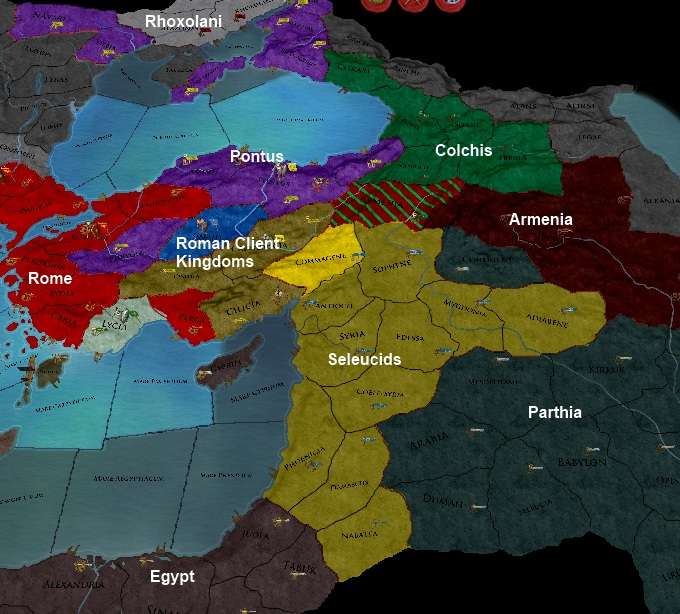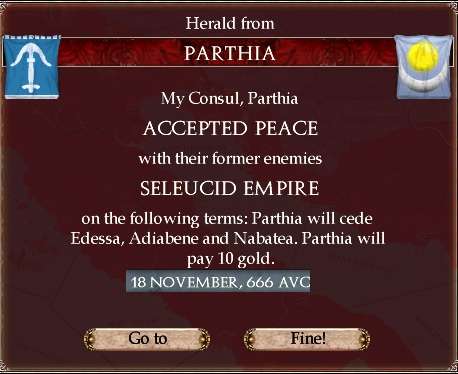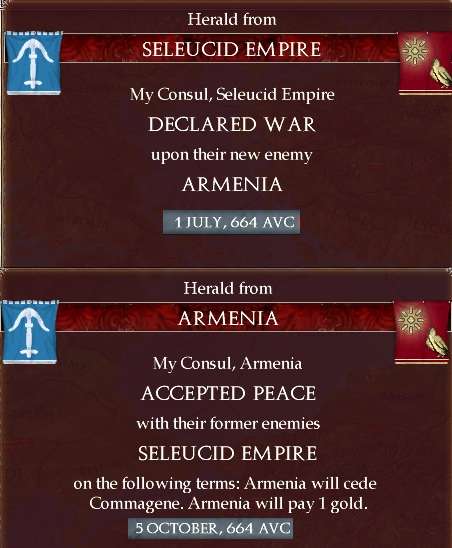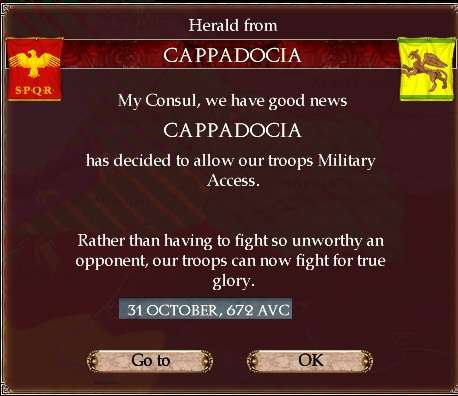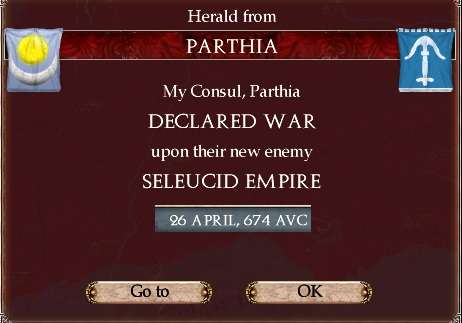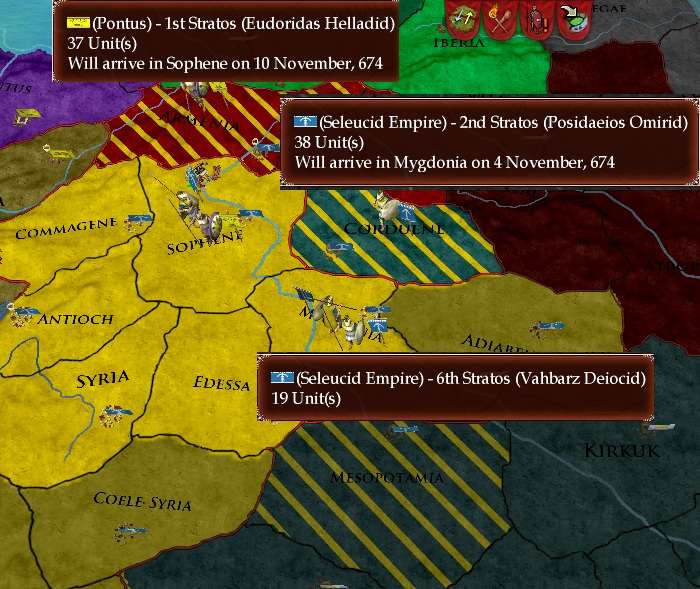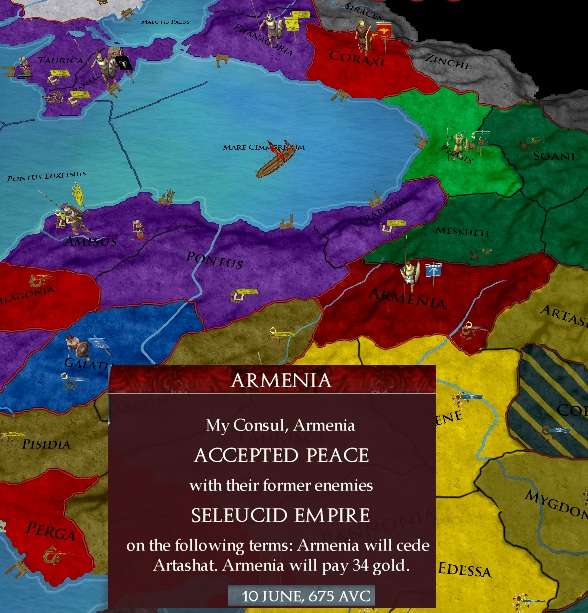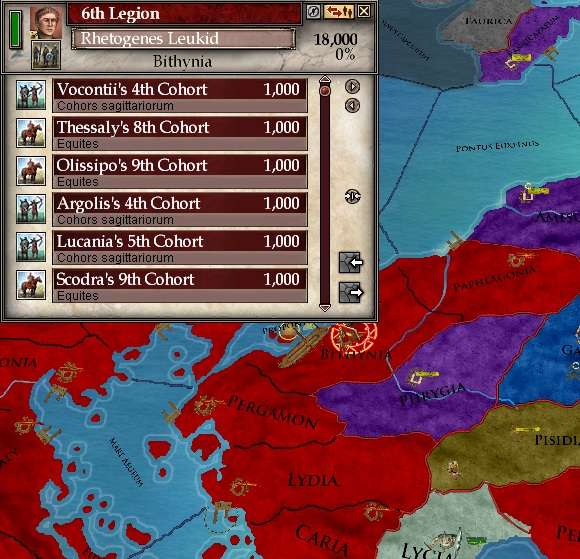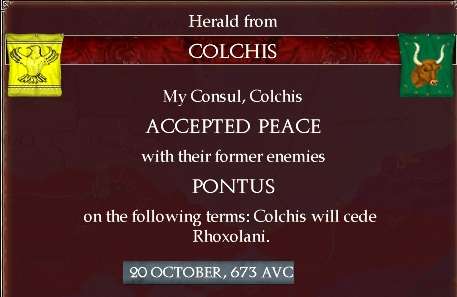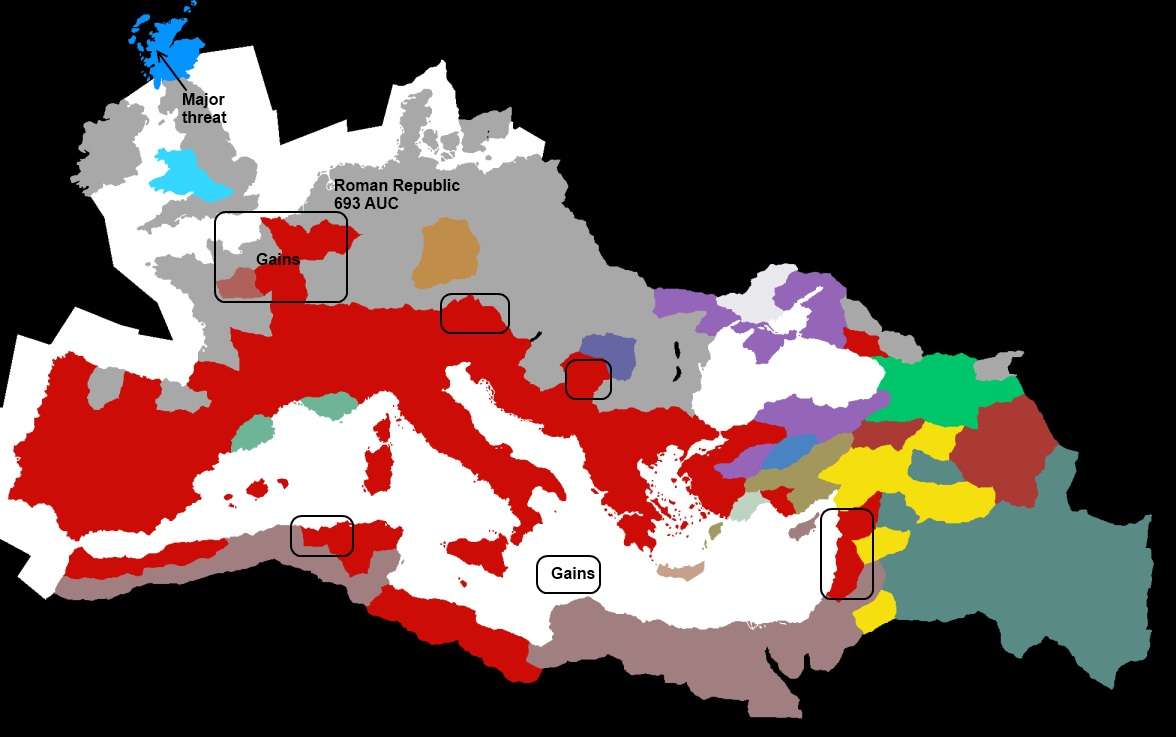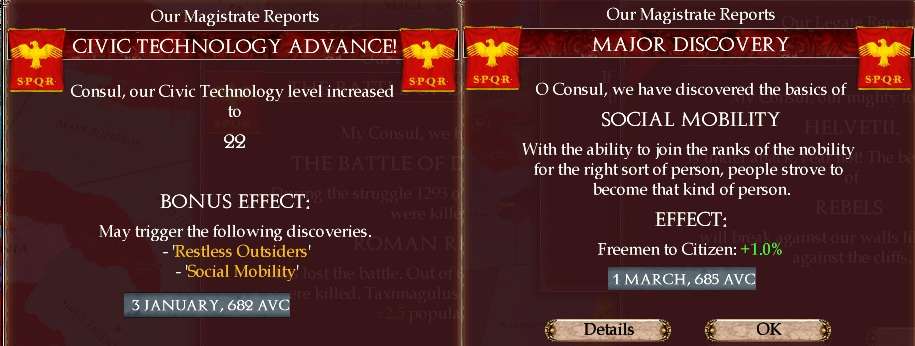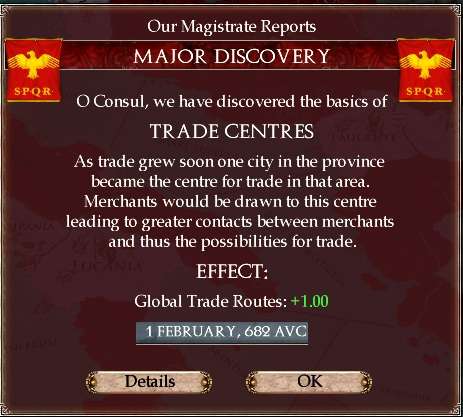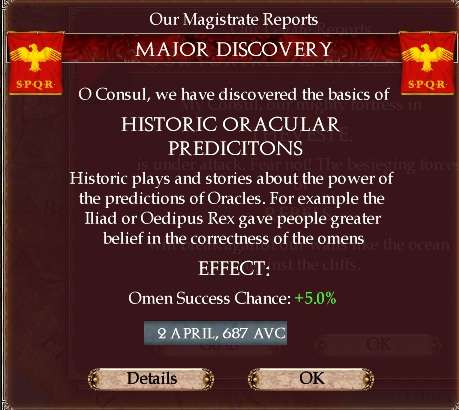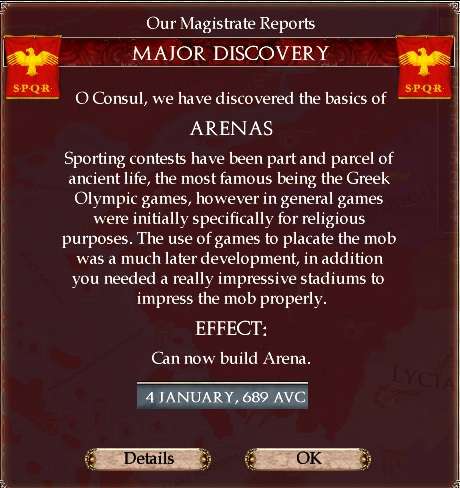The Third Numidian War 677-678
Given the complex situation at the end of the Second Numidian War further conflict was perhaps inevitable. The Senate was now as much worried about further Egyptian expansion as it was that Numidia would ever become a threat on the scale of Carthage.
News of a serious revolt in April 677 led the Senate to offer Roman protection over the rump kingdom. It was clear that it could no longer protect itself and the entry of Roman legions would restore domestic peace.
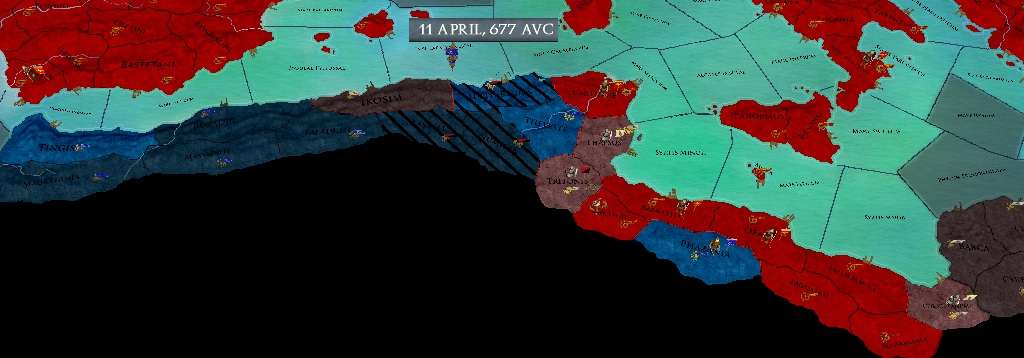
However, the Numidian murder of Faustus Saturninus escalated the problem. Rome now had to intervene to maintain her reputation rather than with the goal of eliminating rebels.
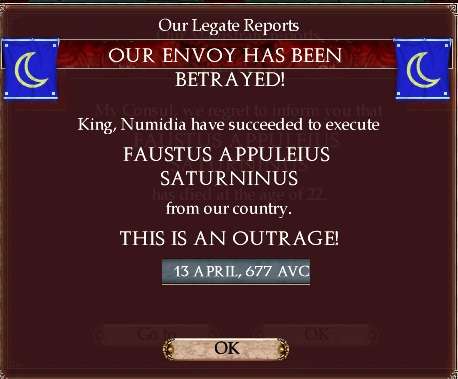
In revenge the Senate agreed to a small scale incursion designed to bring Numidia to heel and to remind their rulers of the importance of international law.
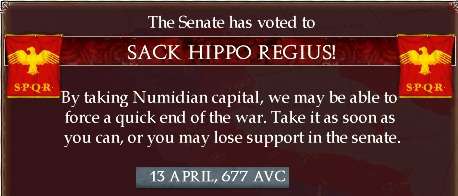
What followed was relatively one-sided. The rebuilt navy won a major victory off Carthage ending any threat to Italy.
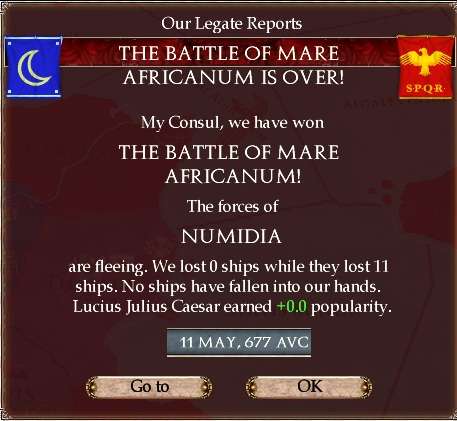
On land, for the first time Rome won easy victories. The Numidian army was still large, but it seemed as if the veterans of the previous wars had been replaced by raw recruits. A foe that had destroyed entire legions was quickly routed in a series of battles.

With the fall of their capital in late 677, organised resistance ceased.
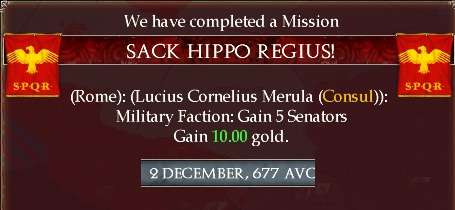
By early 678 the Senate imposed its terms. These were designed as much to protect key regions from any further gains by the Egyptians rather than driven by any Roman expansion

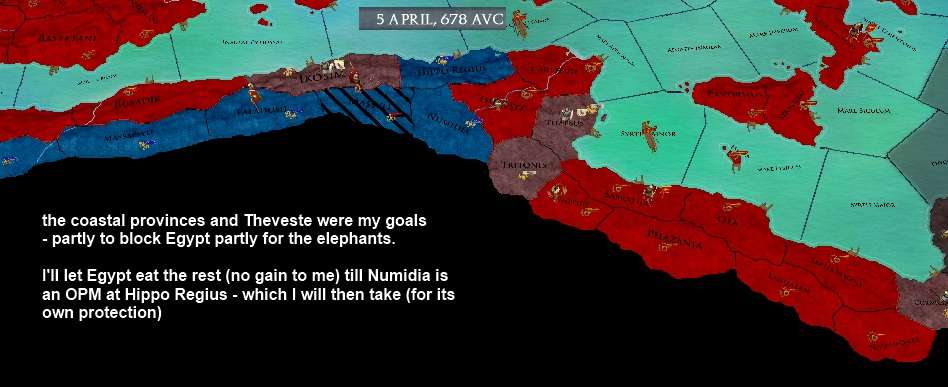
However, even a short successful war had consequences. His predecessors in North Africa from the great Scipio onwards had accepted no reward for their feats of arms. Cinna demanded, and was granted, a triumph. Yet another dangerous precedent had been set.
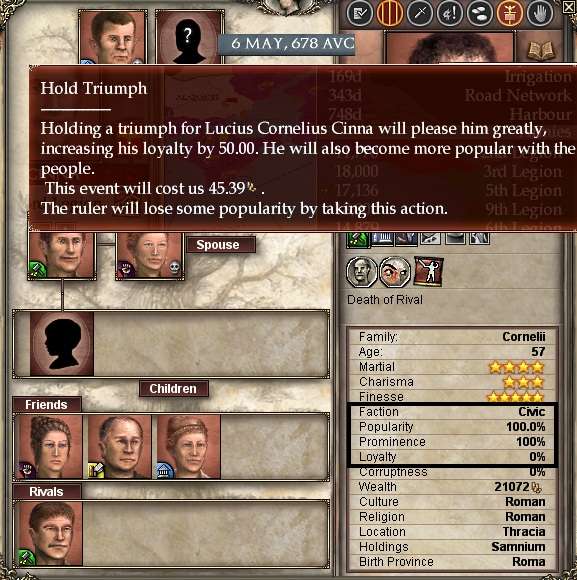
The rump Numidian kingdom was not to spend long at peace. [1]
[1] – in effect from now on, it gets chewed into smaller parts by Rome and Egypt in turn – my goal is to hold Hippo Regius at the end (probably the only remaining province of any real value, now I have the elephants at Theveste).
Given the complex situation at the end of the Second Numidian War further conflict was perhaps inevitable. The Senate was now as much worried about further Egyptian expansion as it was that Numidia would ever become a threat on the scale of Carthage.
News of a serious revolt in April 677 led the Senate to offer Roman protection over the rump kingdom. It was clear that it could no longer protect itself and the entry of Roman legions would restore domestic peace.

However, the Numidian murder of Faustus Saturninus escalated the problem. Rome now had to intervene to maintain her reputation rather than with the goal of eliminating rebels.

In revenge the Senate agreed to a small scale incursion designed to bring Numidia to heel and to remind their rulers of the importance of international law.

What followed was relatively one-sided. The rebuilt navy won a major victory off Carthage ending any threat to Italy.

On land, for the first time Rome won easy victories. The Numidian army was still large, but it seemed as if the veterans of the previous wars had been replaced by raw recruits. A foe that had destroyed entire legions was quickly routed in a series of battles.

With the fall of their capital in late 677, organised resistance ceased.

By early 678 the Senate imposed its terms. These were designed as much to protect key regions from any further gains by the Egyptians rather than driven by any Roman expansion


However, even a short successful war had consequences. His predecessors in North Africa from the great Scipio onwards had accepted no reward for their feats of arms. Cinna demanded, and was granted, a triumph. Yet another dangerous precedent had been set.

The rump Numidian kingdom was not to spend long at peace. [1]
[1] – in effect from now on, it gets chewed into smaller parts by Rome and Egypt in turn – my goal is to hold Hippo Regius at the end (probably the only remaining province of any real value, now I have the elephants at Theveste).


